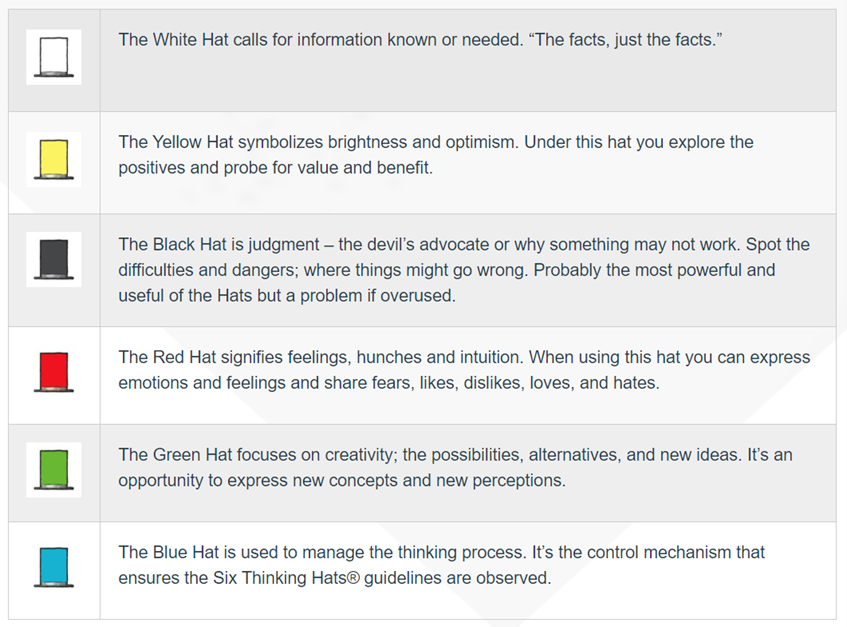Information

We can analyze different points of view from the message sender and messenger receiver perspective. It helps to notice how different we think. Now it is the time to look at problematic situations through different perspectives by using other method – 6 thinking hats.
Until now we were looking to communication process through a person (as participant in communication) perspective. At this moment is necessary is to create some distance and evaluate the problematic situation from a different perspective. 6 Thinking hats are tool created for searching options for problem solving. Furthermore, it is valuable for creating better and common understanding for uncomfortable or conflicted situation.
The method 6 thinking hats require to evaluate a situation as if you were wearing one a color hat at the time and evaluating the situation as it described in the image below.

Figure 3 The de Bono Group: https://www.debonogroup.com/services/core-programs/six-thinking-hats/
This exercise could be done on a personal level or in group by discussion.
In order to gain a better understanding of the tool and while trying to use it for chosen problematic area / topic it would be useful to give around 20 minutes for personal participants thinking and writing. After that is recommended to sit in circle and review part by part and share ideas from one hat to another.
However, at the beginning of the circle you need to make an agreement about blue hat, how you will use it, because the blue hat is responsible for not the discussion content but for the discussion process of sharing ideas. And here are few options for using blue hat:
1) Blue hat can have the trainer / module facilitator.
2) Blue hat can “wear” one of group chosen member.
3) Or blue hat role might be shared. For example, while group is discussing from white hats perspective the moderator as a blue hat role could be a random person. When you move from white hat discussion to yellow hat perspective, then blue hat can rotate to another person of the group.
After 6 hats discussion you will have better understanding about situation from different angles.
Further reading:
For more information on “6 Thinking Hats”: https://www.mindtools.com/pages/article/newTED_07.htm
Or you might be interested to read the book: https://kitn.net/wp-content/uploads/2015/03/Edward_de_Bono_six_thinking_hatskitn.net_.pdf